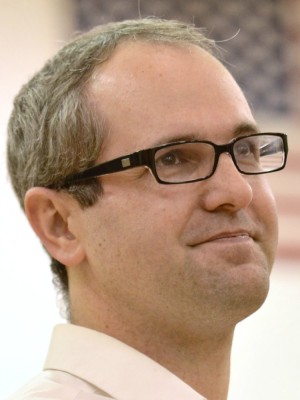
Ryan Lafferty instills in his students the love and relevance of physics to everyday life. Through Lafferty’s project-based approach, connectivity of curriculum to math, history and the arts as well as a can-do attitude, students are captivated by his lessons with some inspired to go into physics careers themselves.
Many of Lafferty’s classroom practices stem from his work with the Bellevue School District, University of Washington and the George Lucas Educational Foundation to develop a problem-based curriculum for AP Physics with the hopes of it becoming implemented nationally. Students do everything from building Roman arches, projectile instruments such as slingshots and catapults, and a Diddley bow (single-string instrument). The Diddley bow project was done in conjunction with the history and art departments. Students built the instruments in art, studied the impact of tension on sound in physics and learned to play them in music. Another project was a “crash scene investigators” unit in which students analyzed what happened in a crash based on physics.
It’s no surprise that Lafferty’s classes are in demand. His AP classes are offered every year, with students producing high pass rates on the AP exam and district assessments. Accelerated students have become student teachers in his class, furthering Lafferty’s ability to help everyone excel.
Lafferty’s dedication to student success extends beyond his classroom. Known on campus as a natural leader, he goes the distance to guide struggling students in other classrooms and is regularly on hand to help colleagues meet students’ needs. He engages all students with a yearly video game design focus week, during which he brings in a colleague, parents, alumni and industry leaders from Microsoft to participate. All school staff members showed their general appreciation for Lafferty by dressing up as him for Halloween.
Lafferty is a National Honors Society advisor, serves on the school’s middle and high science clubs and travels to the state science bowl. Lafferty is also committed to enhancing social emotional learning, interdepartmental collaboration and professional communication.
He received his Bachelor of Science in physics from the University of Washington in 2008 and a Master in Teaching from Seattle University in 2010.